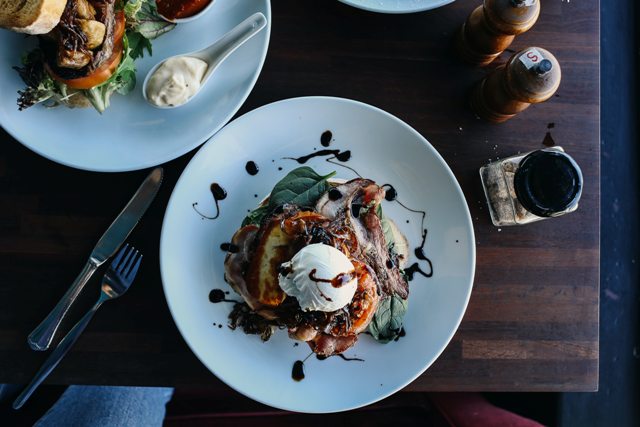If food tastes good, people will buy it, right? Unfortunately, that isn’t always the case. If you own a restaurant, you know that the food must appeal to other senses, most specifically smell and sight. Smell is obvious, but with sight, you have to make your food look appealing if you want people to buy it. It’s as simple as that.

Plating creates a sense of anticipation for your dish. It is likely the first impression someone will get of your dish, and you never get a second chance to make one. It will set the tone for the meal to come, so if you do it wrong, the meal will be diminished or even ruined. Bad plating leads to dissatisfied diners, which means few repeat visits. If you’re struggling with plating, or are a new restaurant owner who wants to know how it works, here are some best practices to follow.
Make It Match Your Brand
Plating is as much about personality as it is about looks. It’s important for your plating to reflect your restaurant’s brand and identity. For example, if you have a little hole-in-the-wall ethnic restaurant, your customers will want simple food served in rustic dishes. On the other hand, a high-end restaurant should have something unique in every dish. It should never be just steak and potatoes. It must have something that customers can associate with your brand and why they chose your restaurant.
Create Height On The Plate
When you make food at home, naturally, you lay it out on the plate so that people can eat each component when they want. However, creating height might be the way to go at a restaurant. It creates a visually appealing dish, even making it look like there’s more food on the plate. Therefore, it’s a good way to “increase” your portion size without spending the money to do so. Having your food laid out at three different heights is generally a good idea. Just like with other arts like theater and dance, levels break up the monotony and make it more dynamic to the eye.
Have The Right Tableware
We’ve already mentioned how your brand should be carried through to the dish. That includes your tableware. You wouldn’t have a high-end restaurant that serves food on plastic plates, would you? The size of the plate you use is important, as is the color. You can never go wrong with white, and it’s a good color to experiment with the food elements on the plate. You won’t have to worry about clashing colors or the eye being distracted by the plate. If you find a dish that’s cracked or that is stained beyond help, then dispose of it immediately. Nothing will ruin your reputation faster than a food health scare or for someone to cut themselves on a chipped plate. If you want, you can get custom food serving products that will suit your theme and make your brand stronger.
Experiment With Texture
Texture can add some amazing visual appeal but also feel great in your mouth. Play around with crunchy and smooth combinations. The latest trend is to use foams to create contrasting textures. Put your sauces in a squeezable bottle so that you can spread them accurately. Put a crunchy ingredient on top of your sauce to create a pleasing mixture for your mouth. You can also have your meat in the middle of the plate and drizzle gravy off to the sides, so the diner must put them together themselves.
Balance It Out
As a lot of these tips touch on, one of the keys for good plating is having balance. You don’t want eyes or mouths to be overwhelmed by a sensation, color, or experience. That’s why it’s important to play around with everything but to have some balance. For example, if you have something crunchy, make sure to have something soft. If you have boldly colored food, like a pepper, then balance it out with something brown or white. You can also play with shapes, such as rounded, coned, or even squared. Keep the concept of balance in mind at all times when you are experimenting with how you want to plate your dishes.
Smaller Portions
You don’t want your portions to be so small that your customers are dissatisfied and won’t come back. However, the fact is that smaller portions are easier to plate stylistically, and they are also more attractive to the eye. The more food you have, the higher the chance that it will look like a heap on the plate. If you do it right, then it will look like you have bigger portions than you do, and your customers will be too satiated to notice.
However, if you have the type of restaurant and customers wanting bigger portions, you should do that. For instance, a steakhouse might advertise the fact that it has huge slabs of meat. In that case, you can always serve your food on bigger plates so that you have more room to play with plating.
Find Your Personal Style
While you should remember these concepts, don’t be afraid to get creative. There’s nothing better than putting your own stamp on something. You will make mistakes along the way, but if you’re patient with yourself and don’t get discouraged, you will find your personal style shining through. No matter how much money it brings in, there’s no point in owning a restaurant or any business if you can’t have fun. So play around and see what you come up with.